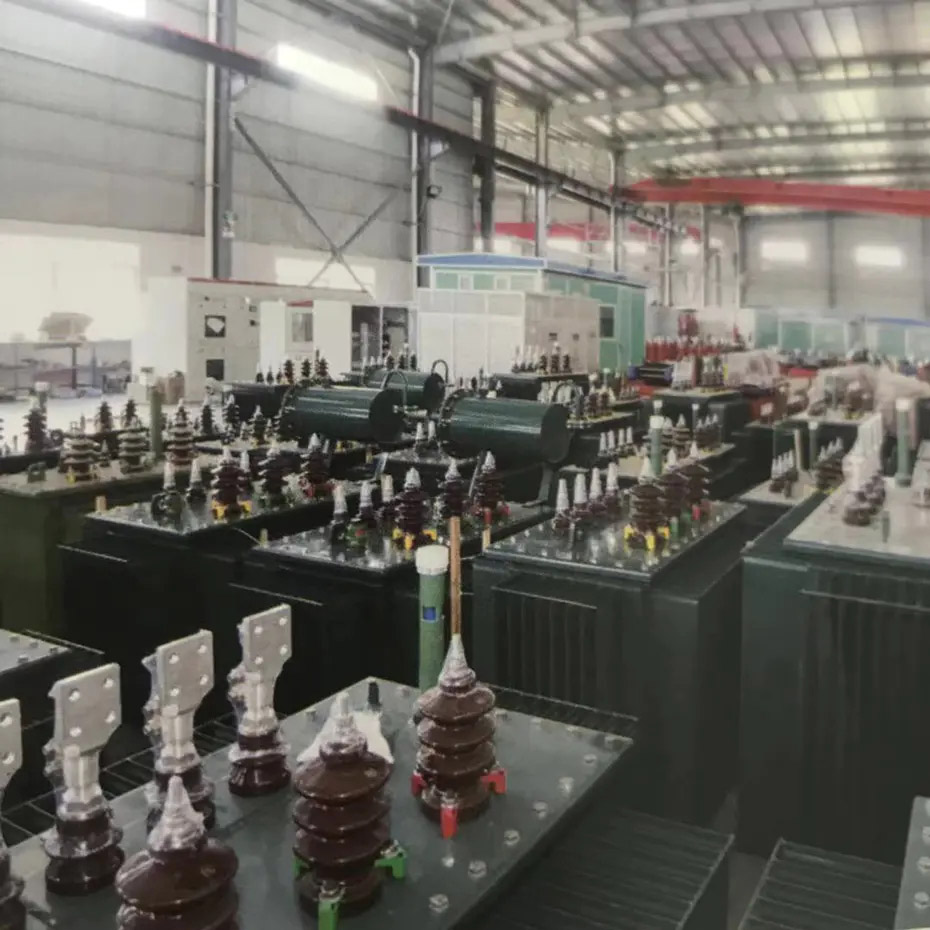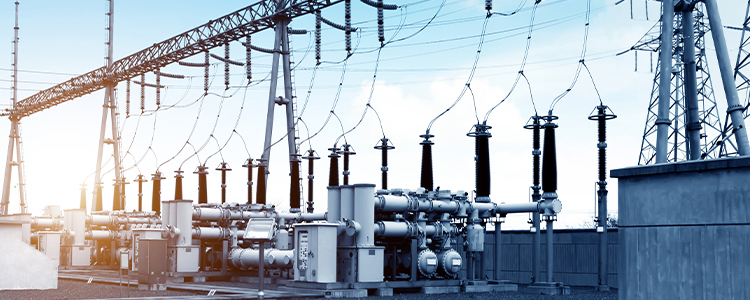Structural function editing In the main substation of the urban rail transit power supply system, the main transformer usually uses a three-phase oil-immersed transformer, as shown in the figure.
Oil-immersed transformers are mainly composed of iron cores, windings, fuel tanks, voltage regulators, radiators, oil pillows, gas relays, insulating sleeves, explosion-proof tubes and other parts.
Iron core Three-phase oil-immersed transformer outline diagram The iron core is composed of laminated silicon steel sheets with good magnetic permeability. It forms a closed magnetic flux circuit. The primary and secondary windings of the transformer are wound on the iron core.Transformer cores are divided into two types: core type and shell type.Currently, the widely used transformers are of core type. The heart-shaped iron core consists of a south iron core column and an iron yoke. The iron core of the oil-immersed transformer has an oil passage for cooling the iron core, which facilitates the circulation of transformer oil and also enhances the heat dissipation effect of the equipment.
Winding Winding, also known as coil, is the conductive loop of the transformer. It is made of copper or aluminum wire to form a multilayer cylinder.
1. The secondary winding is concentrically sleeved on the iron core column.
2. For insulation, the low-voltage winding is generally inside and the high-voltage winding is outside. The insulating material is wrapped around the wires to ensure the insulation between the wires and the wires to the ground.
3. Oil tank The oil tank is the shell of an oil-immersed transformer. In addition to oil, it is also used to install other components.
4. Voltage regulating device The voltage regulating device is set up to ensure the stability of the secondary voltage of the transformer. When the power supply voltage fluctuates, use the voltage regulator to adjust the transformer tap switch to ensure the stability of the secondary side output voltage. The pressure regulating device is divided into two types: on-load pressure regulating device and no-load pressure regulating device.
5. Radiator The radiator is installed on the wall of the oil tank, and the upper and lower parts are connected with the oil tank through pipelines. When there is a temperature difference between the upper oil temperature and the lower oil temperature of the transformer, the convection of the oil is formed through the radiator, and then flows back to the oil tank after being cooled by the radiator. The role of transformer oil temperature. In order to improve the cooling effect, measures such as self-cooling, forced air cooling and forced water cooling can be adopted.
6. Oil pillow Oil pillow is also called oil tank. Transformer oil will expand and contract due to temperature changes, and the oil level will also rise or fall with temperature changes. The function of the oil pillow is to leave room for the thermal expansion and contraction of the oil to keep the oil tank always full of oil; at the same time, thanks to the oil pillow, the contact area between the oil and the air is reduced, which can slow down the oxidation of the oil.
7. Gas relay Gas relay, also known as Buchholz relay, is the main protection device for internal faults of the transformer. It is installed in the middle of the oil pipe connecting the oil tank and the oil pillow. When a serious fault occurs inside the transformer, the gas relay turns on the circuit breaker to trip the same circuit; when a non-serious fault occurs inside the transformer, the gas relay connects to the fault signal circuit.
8. Insulating bushings High and low insulating bushings are located on the top cover of the transformer tank. Oil-immersed transformers generally use porcelain insulating bushings. The function of the insulating sleeve is to keep the high and low voltage winding leads and the fuel tank well insulated, and to fix the leads.
9. Explosion-proof tube Explosion-proof tube, also known as safety air duct, is installed on the oil tank of the transformer, and its outlet is sealed with a glass explosion-proof film. When a serious fault occurs inside the transformer and the gas relay fails, the gas inside the fuel tank breaks through the glass explosion-proof membrane and is ejected from the safety air passage to prevent the transformer from exploding.

Post time: Dec-31-2020












